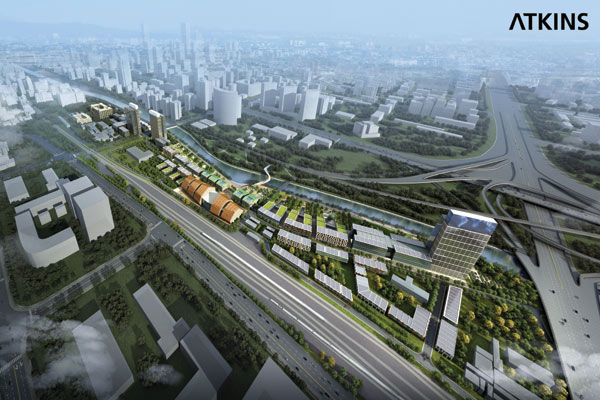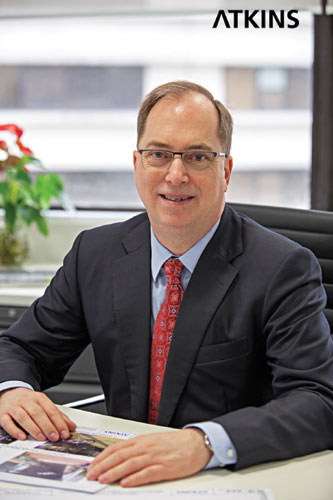

|
 |
|
A mock-up image of Tonghui river in Beijing's central business district. Its regeneration is a project being carried out by WS Atkins. Provided to China Daily |
Walking into the Beijing office of WS Atkins Plc, a design, engineering and project management consultancy firm based in the United Kingdom, it is hard to ignore the models of many world renowned buildings on display - from the Burj Al Arab top-class hotel in the United Arab Emirates, to the Olympic Park for the London 2012 Games. All of them are projects by Atkins.
| Q+A: Chris Birdsong |
 |
|
Chris Birdsong,Atkins' Asia-Pacific Chief Executive Officer [Provided to China Daily] |
Atkins' Asia-Pacific Chief Executive Officer Chris Birdsong, sitting near the windows facing Beijing's Changan Avenue and the visible traffic volumes on the road, is equally proud of the company's works in the rapid urbanization of China.
Pointing at a framed picture on the wall, he said the 2012 project features part of the neighboring Tonghui River in the central business district being regenerated.
"Urban regeneration is a natural part of the development of cities," said Birdsong. "We would call some of that 'brownfield development'."
He refers to self-regeneration of the city as a part of its natural life cycle.
"So when you take Shanghai, Beijing or London as examples, you expect regeneration. Many times you have cities that have areas suffering from blight and areas that don't regenerate because of social issues or economic issues, or that weren't in the right position for the city.
And when they don't regenerate, city governments are forced to intervene to do the job."
Regeneration in China is just in its infancy, said the CEO, who joined the firm in 2007.
Previously, he worked for Bechtel Corp, a construction and project management firm, for more than 33 years, involved with notable projects including the UK's West Coast rail network modernization program.
For the last 30 years, there has been massive development in China because of its population growth. Over the next 20 years, there will be another 300-plus million people moving to cities in China, a number the size of the population of the United States, he said.
But lots of that urbanization over the next 20 years would be a combination of brownfield and greenfield, otherwise known as undeveloped, sites.
Greenfield development means one can build a new city. He said the future landscape in China will mainly involve redevelopment within cities such as Shanghai, Shenzhen, Chengdu and Chongqing, as well as the regeneration of second- and third-tier cities, plus new city development.
Regenerating cities from within is more complex than starting afresh, said Birdsong.
 Honda models at 2013 Guangzhou auto show
Honda models at 2013 Guangzhou auto show
 Honda Jade at the 2013 Guangzhou auto show
Honda Jade at the 2013 Guangzhou auto show
 Toyota's new Reiz debuts at 2013 Auto Guangzhou
Toyota's new Reiz debuts at 2013 Auto Guangzhou
 Jimmy Lin Zhiying, models at Toyota pavilion
Jimmy Lin Zhiying, models at Toyota pavilion
 Volvo all-new S60L world premiere at Guangzhou auto show
Volvo all-new S60L world premiere at Guangzhou auto show
 2013 Guangzhou auto show carmakers' eventers
2013 Guangzhou auto show carmakers' eventers
 Models at Volvo pavilion at 2013 Guangzhou auto show
Models at Volvo pavilion at 2013 Guangzhou auto show
 Lexus new hybrid hatch CT200h world premiere in Guangzhou
Lexus new hybrid hatch CT200h world premiere in Guangzhou